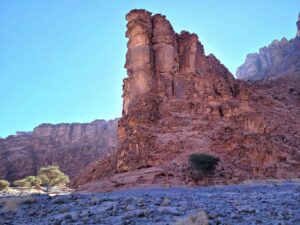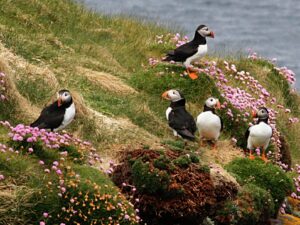Even in this era of ultra-marathons, Jelle Veyt’s latest project stands a few steps — actually, a few million steps — beyond. The Belgian adventurer has just cycled and rowed from Nepal to Indonesia. It’s part of a long-term plan to climb the Seven Summits, reaching them entirely — or as much as possible — by human power. He is now 22 months and three summits in. So far, he has covered 14,500km out of a projected 44,000km.
Veyt comes from a family of cyclists, which made concocting such a trip very natural for him. In university, he took up solo cycling and mountaineering, inspired by another Belgian named Willy Troch, who likewise focused on the Seven Summits.

Veyt and his bike. Photo: Jelle Veyt
To prepare, he rowed every day and worked on strength and endurance. His job as a sports physiotherapist helped with methodical and intelligent training. He also studied Google Earth, and nautical guides and charts, and contacted others who had attempted similar feats, such as Sandy Robson, an Australian kayaker who travelled from Germany to Australia, and Noel Hannah, who went from the summit of Carstensz Pyramid to a coastal town called Nabire. Along many of his sketched-out routes, however, information about topography, essential resources and dangerous roads was lacking.
Veyt began by climbing Mounts Elbrus and Everest. During his travels, he went from village to village, learning about local people and their customs. To him, “the summit is not the main goal…If you fly to a mountain and climb it, you miss [the most important part].”

Veyt in his boat. Photo: Jelle Veyt
To reach Oceania’s highest peak, Carstensz Pyramid on Papua Island, he had to row 4,000km from Jakarta, Indonesia to Papua Island. He used a lightweight whaleboat, which he commissioned from fellow Belgian and rowboat designer Koen De Gezelle. The 120kg boat was built out of plant fiber specifically for him, as some of the currents en route were too swift for a heavy craft. It was strong enough to withstand big waves and rocks and spacious enough for all his essentials: a hammock for sleeping, cook stove, water purifier, spare clothes, his drone and camera, repair kit, a second pair of oars, first aid kit, food and more.
Keon became his mentor, rowing with him in Indonesia for the first month to familiarize him with the boat and to advance Veyt’s navigation skills. Veyt rowed for five months in total, from 6 to 16 hours a day.
He tried to obtain his food in villages, sometimes a serious challenge. Inadequate nutrition made him weaker and more prone to illness. Five months into the expedition, he became very sick and had to return to Belgium for two weeks to recover. After the brief hiatus, he returned with more nutritious food and medication, and continued.
Luckily, water was easy to come by, yet political danger lay ahead, as violent clashes between the Indonesian government and separatists barred his route. He had to cover the last 70km by helicopter in order to climb Carstensz Pyramid.
He now plans to row the Atlantic Ocean from Portugal to Miami, then cycle to Alaska’s Denali. After that, he heads to Aconcagua, then rows over the stormiest sea on earth from Argentina to Antarctica, where he will ski to Mount Vinson. This Antarctic leg will include his boatbuilder, Keon De Gezelle. Cycling from Belgium to Mount Kilimanjaro will mark his seventh summit. With odd precision, Veyt estimates that he will finish the project in another 3,104 days.






